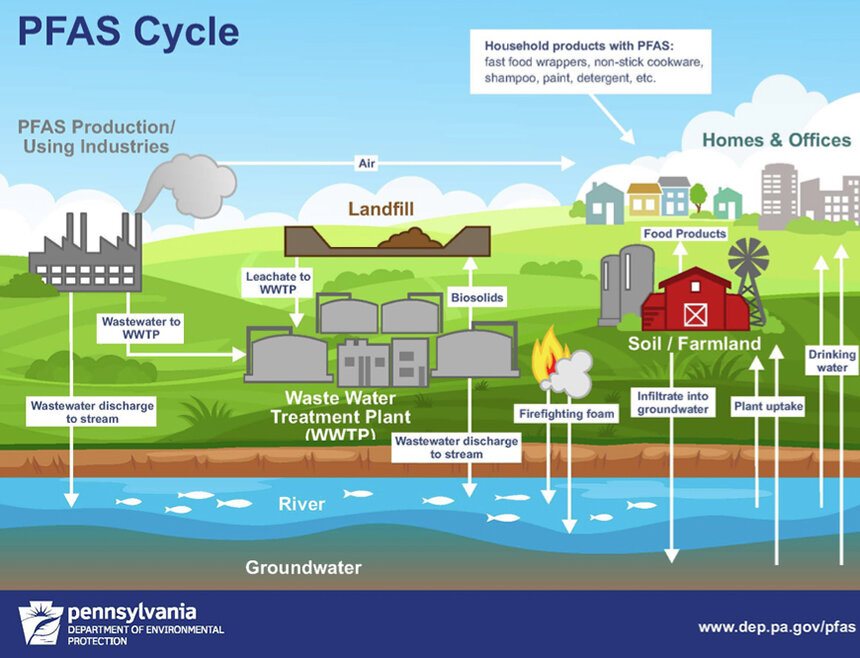Woonasquatucket River Greenway and Urban Trail Join Forces
June 3, 2020
The Woonasquatucket River Greenway was born in 1993, when Fred Lippitt, chair of the Providence Plan, initiated the project to help revitalize the city’s Olyneville neighborhood. At the time, 60 percent of the population in that area didn’t own a car, and there were no safe green spaces for people to gather.
Fast-forward to 2020, and 75 acres of parkland have been created along the river, as well as 7 miles of urban bike path. Fast-forward to a May 28 virtual meeting and the final leg of the Urban Trail initiative was revealed to the public for comment.
City officials, consultants, and the Woonasquatucket River Watershed Council presented the details of this section of the path, which currently spans from Lyman Avenue in Johnston to Eagle Square in Providence. The final piece will connect the bike and walking path along the winding Woonasquatucket River to the Providence Place mall area.
“The city is strongly behind this project; it’s part of the shared vision we have,” Mayor Jorge Elorza said during his opening remarks. “There’s a lot of discussion around public health now, but also afterwards, and we know that we have to make places like this accessible and inviting to the community. Along with that, you all know that we are strong, strong believers in increasing bicycle and pedestrian amenities.”
The remaining section of the Urban Trail will run along Kinsley Avenue, past a series of condominiums, under 95 North, and up to the west-facing side of the mall. In addition to having a bike path and pedestrian walking space, green infrastructure will allow for stormwater management, and kayak launches, public art, and plants and trees for pleasant pedestrian interactions.
To ensure further pedestrian and bicyclist safety measures, a variety of traffic managing systems will be installed, among them chicanes, an artificial narrowing or turn in a road that forces drivers to slow down.
“These elements have been used in other projects in other areas to reduce speed,” said Francisco Lovera, a project manager from Boston-based McMahon Associates Inc., a transportation engineering and planning firm. “We have obtained traffic counts in the area and the operating speeds are …. close to 40 miles per hour, which is not necessarily the speeds that you would be hoping to have your kids or your family walking and enjoying a stroll on the area to be near.”
Comments and questions from online attendees varied. Would there be sufficient parking space for parents picking up children at Paul Cuffee Lower School? Would community gardens ever be considered? What about native plants?
The answers to these questions, respectively, were: yes, that is being considered; no, the soil isn’t great for planting edible things; and yes, native plants will definitely be used.
“This is our second public meeting, we had one last year, and this year we want to present with a little more detail, the different concepts and elements that we have come up with,” Lovera said. “This is still a 10 percent design, it’s very conceptual, and we are under the expectation that the comments we will get today from the public as well as from partner agencies … may cause some tweaks to the design, but overall what you see today will be similar to what we expect it to have.”
The project plans are expected to be completed by spring 2021, with construction spanning from then into 2022.




the end of the Greenway is Lyman Ave in Johnston, not North Providence. The Polisena administration has opposed any extension of the the path northward even though some of the right of way is in public ownership and at one time there had been considerable funding available thru a Congressional "earmark." Similarly Smithfield government also opposed a bike path on the same abandoned rail line that once went out to Wallum Lake in Burrillville. Sad that Rhode Islanders have missed this opportunity for healthy outdoor recreation and transportation
Barry, thanks for heads-up on mistake. It has been corrected. — Frank Carini, ecoRI News editor
The comment about the soil not be good fro growing edibles is bogus. No one builds a community garden using urban industrial soils, you bring in soil and build raised beds. A community garden might be a good thing depending upon how close it is to where people live. has to be an easy walk.